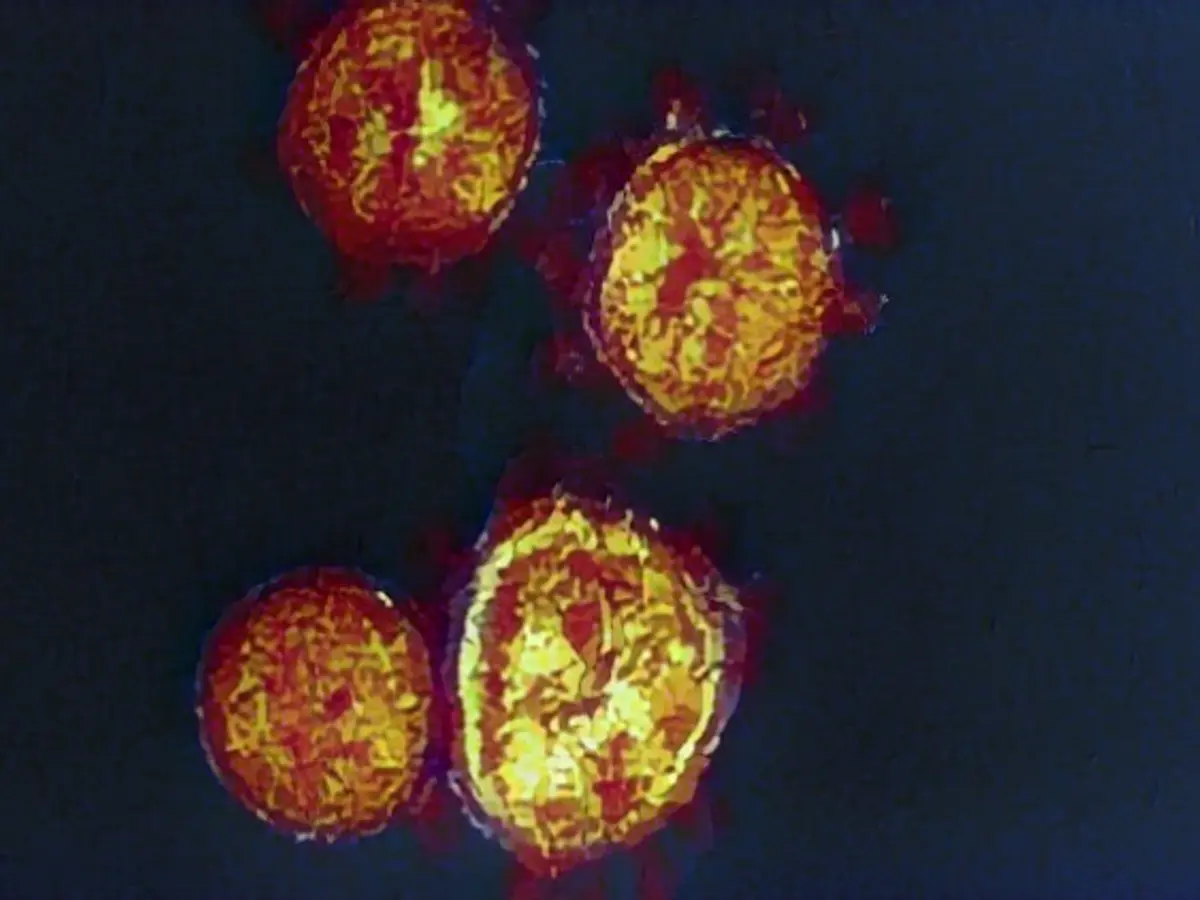New corona variant is spreading rapidly in the USA
The coronavirus is constantly mutating and producing new variants - including HV.1. The new Omikron subtype is currently spreading in the USA and is now responsible for most Covid infections there. Experts explain whether the variant could soon come to Germany and how dangerous it is.
After Eris and Pirola, a new coronavirus variant is now causing a stir: The omicron subtype HV.1 is spreading rapidly in the USA - and now dominates the incidence of infection. "We have a new Covid variant that we need to keep an eye on," warned Andrea Garcia, Vice President of the American Health Association (AMA), recently. "It's only been a few weeks and HV.1 has become the variant responsible for most Covid cases here in the US."
The new variant has been in circulation there since the summer and suddenly overtook other variants such as Eris (EG.5) in October. At the end of July, HV.1 accounted for just 0.5 percent of Covid-19 cases in the USA, according to data from the Centers for Disease Control and Prevention (CDC). By September 30, this figure had risen to 12 percent, and by November it was already more than a quarter of cases.
But what exactly characterizes HV.1? "You can almost think of HV.1 as a grandson of Omikron," infectiologist William Schaffner from Vanderbilt University told the US portal Today.com. According to the CDC's Sars-CoV-2 lineage tree, HV.1 is a sublineage of Omikron XBB-1.9.2 and a direct descendant of Eris. This means that HV.1 is not as worrying as Pirola and JN.1 - but it is apparently spreading much faster.
Risk of chronic bronchitis
"Given the similarity of the variants, it is unclear exactly how HV.1 has overtaken EG.5," Dan Barouch, Director of the Center for Virology and Vaccine Research at Beth Israel Deaconess Medical Center in Boston, told the New York Times. HV.1 has only insignificantly more mutations than its predecessor. Nevertheless, one of these few additional mutations must have given the new variant an advantage. "Whenever a new variant dominates, it has an advantage by definition," says the expert. "And the advantage is either easier transmissibility or increased immune escape."
Infectiologist Schaffner favors the easier transmissibility. "That probably explains why it became dominant so quickly in the USA," says the virologist. The high transmissibility is a characteristic of the entire Omikron family anyway. However, it is not yet clear whether HV.1 also circumvents immunity. "The problem is that most people's immunity has waned again and our vaccination uptake is still very low. So it is still too early to draw any conclusions about HV.1 immunity," infectiologist Priya Sampathkumar told Today.com.
According to Schaffner, the symptoms triggered by HV.1 are similar to those of newer variants. These include sore throat, stuffy nose, runny nose, cough, fatigue, headache, muscle aches, fever and chills. The infectiologist also points out that the virus can cause a type of chronic bronchitis with a cough that lasts much longer than other symptoms. Nevertheless, according to Schaffner, there is no evidence that the variant triggers more severe illnesses or leads to more hospital stays.
Vaccinations continue to provide protection
Preventive physician and medical journalist Dr. Christoph Specht also sees no cause for concern. Experts in the USA are now rightly "keeping an eye" on the new HV.1 variant, but there is no need for citizens to have any major concerns, he told ntv. "I assume that the HV.1 variant will also become established in Germany. But from what we know about the new variant so far, it is spreading particularly quickly, but it is not more dangerous," said the doctor.
According to US experts, there is also no reason to panic about the effectiveness of the currently available coronavirus vaccines. "Laboratory studies suggest that the updated booster vaccine also protects against severe disease from HV.1," infectiologist Schaffner told today.com. The new corona vaccines are adapted to the previously dominant Omikron variant XBB.1.5. Since the new variants, like HV.1, are Omikron sublines and therefore closely related, experts assume that there is no danger in this regard.
"HV.1 will be far from the last variant that the coronavirus will serve up to us," says Specht. "We'll have to get used to it." However, there is a good immunity situation in Germany thanks to vaccination and past infections - regardless of which coronavirus variant will come along in the future.
- In light of the rapid spread of the Omikron subtype HV.1 in the USA, the Centers for Disease Control and Prevention (CDC) has been closely monitoring its development.
- Despite being a sublineage of Omikron XBB-1.9.2, the new HV.1 variant has shown a significant increase in prevalence in the USA, surpassing variants like Eris (EG.5) by November.
- Researchers in the USA are currently investigating whether the effectiveness of existing coronavirus vaccines, such as those adapted to the Omikron variant XBB.1.5, will provide protection against the HV.1 variant.
Source: www.ntv.de







